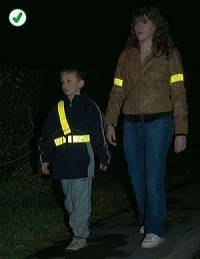RULES FOR PEDESTRIANS:As a rule, walkers should always walk on the right hand side of the road. This is in accordance with the UK Highway Code general guidance rules 1 to 6.
Rule 1: Always use roadside pavements or any path at the side of a road if there is one. Try to avoid walking close to the kerb when your back is facing oncoming traffic from behind you. Make sure to look both ways and check for traffic if you need to step into the road.
Rule 2: Sometimes there will be no pavement to walk on. In this case, keep to the right-hand side of the road in the United Kingdom.
Doing so means you can see the traffic moving towards you. Even so, take extra care and:
- Always stay close to the side of the roadway.
- Consider walking in single file if you must walk in a narrow roadway or in low lighting.
Give due care and consideration for other road users when crossing the road. As a rule, it is often safer to cross the road some distance before a sharp right-hand bend.
Oncoming traffic will have a better chance of seeing any pedestrians. You can then cross back after negotiating the sharp bend.
Note: Determine that all traffic has stopped before walking across the road while using pedestrian crossings. See rule 170 for further clarity on the pedestrian right of way in the United Kingdom.
Pedestrian Safety: Help Road Users See You
Rule 3: As a pedestrian, try to carry or wear something bright or light-coloured. It will help you to get seen by traffic in dull daylight. Use a reflective sash, jackets, footwear, or armbands when it is dark.
 Vehicle headlights spotlight reflective materials much easier than non-reflective clothing.
Vehicle headlights spotlight reflective materials much easier than non-reflective clothing.
Rule 4: Young children are particularly vulnerable to road traffic accidents. So, teach children the Green Cross Code before they start crossing roads alone.
The Highway Code rules for pedestrians has specific guidance for young children. They should not be left alone on the pavement.
Get a firm grip on their hand at all times when accompanying children on the roadside. As an adult, position yourself between the child and the road.
Note: Either use reins or strap infants ‘securely’ inside a pushchair or buggy.
Avoid pushing the perambulator into the road while checking for traffic. This is especially important to avoid doing in-between parked vehicles.
Carrying Lights on an Organised Walk
Rule 5: Large groups of organised walkers should use any available pavement. If there is no side path, a walking group should keep to the left and position a look-out at the front and at the rear. Wearing fluorescent or reflective clothing will help to increase visibility.
During darkness, and in situations requiring extra care, the group’s look-outs and kerbside walkers should show lights. The front member, considered as being the look-out, should display a white light. The person at the rear of an organised walk should carry a red light.
Highway Code Pedestrians on Motorways
Rule 6: We refer to the Road Traffic Regulations Act 1984 section 17. It states that pedestrians MUST NOT be on motorways and slip roads. There are exceptions such as during an emergency breakdown situation.

